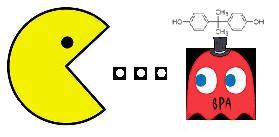Team:Caltech
From 2011.igem.org
| Line 44: | Line 44: | ||
<html><p><a href="https://2011.igem.org/Main_Page"><img class="logo" align="right" src="https://static.igem.org/mediawiki/2011/f/f8/IGEM_logo_2011.jpg"></img></a></p></html> | <html><p><a href="https://2011.igem.org/Main_Page"><img class="logo" align="right" src="https://static.igem.org/mediawiki/2011/f/f8/IGEM_logo_2011.jpg"></img></a></p></html> | ||
| - | <div><font face=" | + | <div><font face="calibri"><div style="font-size:12pt;"><p> We are the Caltech 2011 iGEM Team. We are interested in the bioremediation of endocrine-disrupting chemicals in bodies of water.</p><br/> |
Endocrine-disrupting chemicals are substances which detrimentally effect the development and reproduction of wild organisms. These chemicals mimic natural biological estrogen in their interaction with animal estrogen receptors. This interaction has negative effects for reproductive processes of several species of fish and birds. To remedy that, the Caltech iGEM team hopes to engineer bacteria which can degrade DDT, synthetic estrogen (17a-ethynylestradiol), bisphenol A, and nonylphenol to less toxic forms. Compared to traditional forms of pollution removal, bioremediation is relatively cheaper and less disruptive to the environment. However, a successful project must make sure that the bacteria used for remediation do not act as pollutants or introduce toxic byproducts into the environment.<br/><br/> | Endocrine-disrupting chemicals are substances which detrimentally effect the development and reproduction of wild organisms. These chemicals mimic natural biological estrogen in their interaction with animal estrogen receptors. This interaction has negative effects for reproductive processes of several species of fish and birds. To remedy that, the Caltech iGEM team hopes to engineer bacteria which can degrade DDT, synthetic estrogen (17a-ethynylestradiol), bisphenol A, and nonylphenol to less toxic forms. Compared to traditional forms of pollution removal, bioremediation is relatively cheaper and less disruptive to the environment. However, a successful project must make sure that the bacteria used for remediation do not act as pollutants or introduce toxic byproducts into the environment.<br/><br/> | ||
There are several standard methods of detection for endocrine disruptors to establish which bodies of water require bioremediation. One method involves examination of the local fish population for signs of male feminization, indicated by male expression of vitellogenin, a protein used in egg yolk. Another test developed by the EPA involves using human breast cancer cells containing genes that produce luciferase when an endocrine-disrupting chemical is detected. Once these tests establish the presence of a chemical that can interfere with estrogen receptors, we can use a degradation pathway to remove these chemicals from the body of water.<br/><br/> | There are several standard methods of detection for endocrine disruptors to establish which bodies of water require bioremediation. One method involves examination of the local fish population for signs of male feminization, indicated by male expression of vitellogenin, a protein used in egg yolk. Another test developed by the EPA involves using human breast cancer cells containing genes that produce luciferase when an endocrine-disrupting chemical is detected. Once these tests establish the presence of a chemical that can interfere with estrogen receptors, we can use a degradation pathway to remove these chemicals from the body of water.<br/><br/> | ||
Revision as of 07:46, 27 September 2011
|
Project |
We are the Caltech 2011 iGEM Team. We are interested in the bioremediation of endocrine-disrupting chemicals in bodies of water. Endocrine-disrupting chemicals are substances which detrimentally effect the development and reproduction of wild organisms. These chemicals mimic natural biological estrogen in their interaction with animal estrogen receptors. This interaction has negative effects for reproductive processes of several species of fish and birds. To remedy that, the Caltech iGEM team hopes to engineer bacteria which can degrade DDT, synthetic estrogen (17a-ethynylestradiol), bisphenol A, and nonylphenol to less toxic forms. Compared to traditional forms of pollution removal, bioremediation is relatively cheaper and less disruptive to the environment. However, a successful project must make sure that the bacteria used for remediation do not act as pollutants or introduce toxic byproducts into the environment.
|
 "
"


